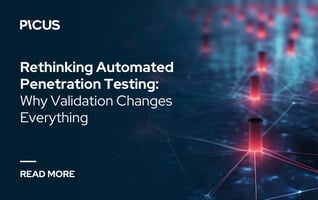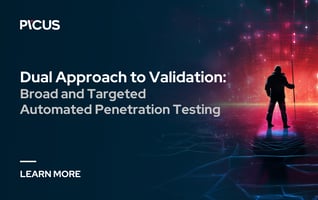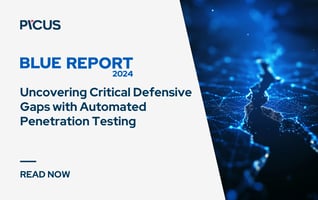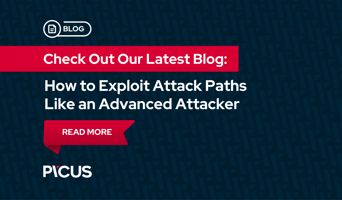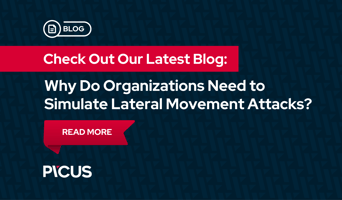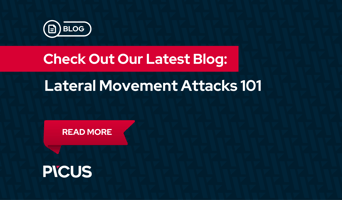Streamlining and Prioritizing Security Mitigations: Introducing Planner
Limited human resources, the complexity in workflows, and the overwhelming volume of threats point to one critical need: streamlined processes that elevate both incident detection and mitigation. Addressing these challenges head-on, Picus is proud to introduce our latest solution: Planner.
Planner is designed to revolutionize how security teams track, prioritize, and remediate critical gaps. By unifying prevention and detection improvements in a single pane of glass and automating as many steps as possible, Planner demonstrates how Picus continues to transform security validation for enterprises worldwide.
Why We Built Planner
Our own extensive research, across dozens of organizations and industries, shed light on three recurring problems:
-
Content Development and Deployment Complexity: Most teams juggle a collection of tools and scripts that result in fractured workflows and delayed response times.
-
Data Collection and Monitoring Hurdles: Security teams often struggle to effectively collect and interpret critical data consistently, hindering time-sensitive decision-making.
-
Increasing Need for Automation: Most organizations with limited resources have to manually handle escalating volumes of threats, and hence, false positives and missed alerts are more probable.
Planner tackles these issues by simplifying how you see, prioritize, and address mitigations on a single platform that consolidates all relevant improvement steps, across both prevention and detection.
The Innovation of Planner
Planner represents a strategic leap forward in security optimization. Building on the core strengths of Picus, including attack simulation, actionable remediation guidance, and vendor-focused mitigation suggestions, it elevates mitigation to the next level by enabling you to:
- See all your simulation-identified gaps in one centralized dashboard.
- Prioritize and address the most pressing gaps first.
- Align remediation efforts with specific security goals.
- Effortlessly deploy recommended mitigations.
With these capabilities, Planner answers one of the biggest requests for clarity and efficiency in security teams: knowing that precious time is spent closing the highest-risk gaps first.
Key Advantages and Benefits of Planner
-
Accelerated Time Savings & Streamlined Operations
Picus Planner automatically combines and ranks all identified gaps, drastically reducing the manual effort typically required to sift through multiple reports. This efficiency empowers the agile response that newly surfaced threats demand.
-
Unified Gap View
Instead of switching between different screens, logs, or dashboards, Planner brings all the exposures and findings into a single pane. This allows the team to be aligned on the most critical issues in a unified view.
-
Prioritized Gaps for Better ROI
By categorizing and scoring risks based on severity, Planner assists CISOs, SOC managers, and security architects in quickly spotting their biggest exposures, helping them focus on problems that, if left untouched, could cause the most damage. This focus translates into improved ROI on both technology and manpower.
-
Goal-Driven Remediation
Each organization has distinct objectives; some focus on prevention scoring, and others demand stronger detection. Planner allows you to define goals and then automatically surfaces the relevant gaps for that specific initiative, blending automation with strategic human oversight.
-
Integrated Prevention and Detection
Planner merges recommended updates for both prevention (e.g., blocking rules, firewall configs) and detection (e.g., SIEM queries, EDR rules) into a single interface. This saves valuable hours in correlating multiple data points.
-
Auto-Deploy Functionality
Just like our Auto-Mitigate approach to detection rules, Planner’s auto-deploy option for supported vendors makes it possible to apply mitigations directly from the Picus interface. This bridges the gap between identifying risk and swiftly implementing the fix and optimizing your security posture in real-time.
-
Closed-Loop Tracking
Once a finding is resolved, it disappears from the Planner dashboard, removing clutter and clarifying the next steps.
-
Future Enhancements: Quick Simulations and Smart Notifications
Planner’s roadmap includes quick, single-threat simulations to see how new countermeasures hold up, rather than re-testing your entire environment. Additionally, smart notifications will alert you to any newly discovered critical gaps, ensuring no high-impact vulnerability gets overlooked.
How Planner Works
Picus Planner’s design reflects our research insights—a structured process that keeps security teams aware of what needs immediate attention, which improvements matter most, and how best to remediate:
-
Simulation Raw Data: After you run a threat simulation through the Picus platform, detailed data is collected on how well your controls performed against each tested attack scenario.
-
Finding Pool: All revealed vulnerabilities or “findings” automatically populate in a single list, eliminating the hassle of juggling multiple dashboards.
-
Labeling: Each finding is labeled according to the nature of the threat (e.g., emerging vs. known), the results of the attack (blocked vs. undetected), and existing or available mitigations.
-
Prioritization: Picus Planner then scores and ranks these labeled findings by impact and severity. The ability to see what truly matters first is invaluable in today’s resource-constrained environments.
Within each threat in the Planner, individual malicious actions also get their own criticality score, based on:
-
Whether the action was blocked, alerted upon, or logged.
-
Mappings to MITRE ATT&CK tactics and techniques.
-
Vulnerability intelligence (CVE scores, OWASP categories, etc.).
-
Environmental metrics (e.g., user’s prevention status, logging capability).
-
Broader correlation metrics
By scoring each action separately, Planner ensures that even a high-level threat is flagged specifically for the parts that pose the greatest danger to your environment.
-
Goal Alignment: Findings are categorized by your organization’s priorities, such as bolstering preventive controls or sharpening detection capabilities. This strategy-driven view ensures you hone in on the highest-value improvements.
-
Detailed Insights and Mitigation Recommendations
For every finding, Planner provides micro-level recommendations tailored to the threat’s atomic actions. Planner integrates the next steps such as:
- NGFW, IPS/IDS, WAF, or other network security control signatures to block known malicious behaviors.
- SIEM or EDR detection rules to generate an alert.
- Logging configurations to improve visibility.
- Prevention, detection, or correlation scripts specific to the user’s vendor solutions.
In many cases, these can be deployed automatically for supported platforms, reducing friction and time to remediate.
Reduce Security Gaps with Automated Mitigation
With security threats on the rise and limited human resources to tackle them, Picus Planner delivers a unified, prioritized, and automated approach to closing gaps, both for prevention and detection. From capturing findings in one place to auto-deploying fixes and then running quick simulations to confirm successful mitigation, Planner tightens the feedback loop between insight and action.
Short on time? Under pressure? Picus Planner streamlines your efforts so that every second is spent effectively to enable you to achieve tangible, data-driven security outcomes by focusing on the highest-risk gaps first.
